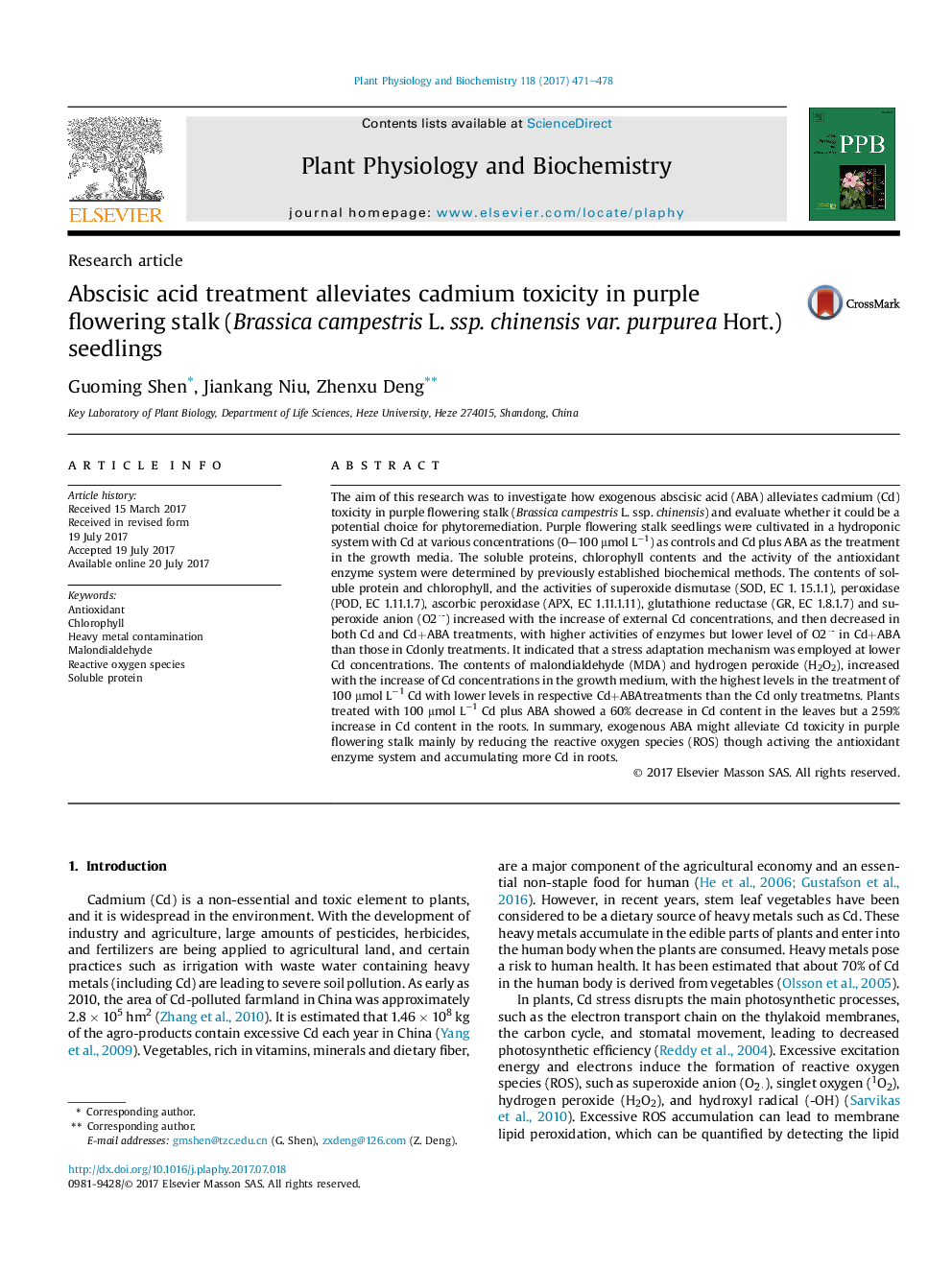| Article ID | Journal | Published Year | Pages | File Type |
|---|---|---|---|---|
| 5515464 | Plant Physiology and Biochemistry | 2017 | 8 Pages |
â¢ABA enhanced Cd accumulation in roots.â¢ABA relieve heavy metal injured in shoots.â¢ABA display a manner of reducing Cd transportation from roots to shoots.
The aim of this research was to investigate how exogenous abscisic acid (ABA) alleviates cadmium (Cd) toxicity in purple flowering stalk (Brassica campestris L. ssp. chinensis) and evaluate whether it could be a potential choice for phytoremediation. Purple flowering stalk seedlings were cultivated in a hydroponic system with Cd at various concentrations (0-100 μmol Lâ1) as controls and Cd plus ABA as the treatment in the growth media. The soluble proteins, chlorophyll contents and the activity of the antioxidant enzyme system were determined by previously established biochemical methods. The contents of soluble protein and chlorophyll, and the activities of superoxide dismutase (SOD, EC 1. 15.1.1), peroxidase (POD, EC 1.11.1.7), ascorbic peroxidase (APX, EC 1.11.1.11), glutathione reductase (GR, EC 1.8.1.7) and superoxide anion (O2·-) increased with the increase of external Cd concentrations, and then decreased in both Cd and Cd+ABA treatments, with higher activities of enzymes but lower level of O2·- in Cd+ABA than those in Cdonly treatments. It indicated that a stress adaptation mechanism was employed at lower Cd concentrations. The contents of malondialdehyde (MDA) and hydrogen peroxide (H2O2), increased with the increase of Cd concentrations in the growth medium, with the highest levels in the treatment of 100 μmol Lâ1 Cd with lower levels in respective Cd+ABAtreatments than the Cd only treatmetns. Plants treated with 100 μmol Lâ1 Cd plus ABA showed a 60% decrease in Cd content in the leaves but a 259% increase in Cd content in the roots. In summary, exogenous ABA might alleviate Cd toxicity in purple flowering stalk mainly by reducing the reactive oxygen species (ROS) though activing the antioxidant enzyme system and accumulating more Cd in roots.
